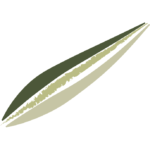LEEAF

Duration: 2023
ABOUT THE PROJECT
Plants’ diseases and infections, like Bactrocera Oleae – Dakus and Aculus olearius, are a major threat to the quantity (loss of even 50% of the tree’s fruiting) and the quality of agricultural harvests. The early detection of such diseases is crucial for a correct and sustainable treatment that reduces the losses of farmers and the possible spread of pathogens to neighbouring plantations. Traditionally, this process involved visual inspection of the plants from experienced personnel (e.g., farmers and agriculturalists), requiring constant monitoring of farms during the plant’s growing, flowering, and harvesting periods. Our goal is to use such state-of-the-art technologies including computer vision, machine learning, artificial intelligence, and Unmanned Aircraft Systems (UASs) to facilitate the process of inspecting olive groves regardless of their size or location. Worldwide each year about 750 million olive trees are cultivated, which means approximately 70 million acres of land. Mediterranean countries alone are responsible for 97% of the world’s olive oil production. Greece is the third largest olive grower country in Europe, after Spain, which is first, and Italy. The olive cultivation in Greece reaches 11.6 million acres with over 170 million trees. 81% of cultivated olive trees are cultivated for olive oil while the remaining 19% produce table olives. Plant diseases and parasites can be identified either from the cultivated plant’s leaves, trunk/stem, or produce. In large cultivations, orchards, and groves, manually inspecting all plants requires a large number of highly experienced personnel to quickly identify both the intensity of the problem as well as its spread throughout
the field.
Unmanned Aircraft Systems (UAS) have proven their capabilities in inspection and monitoring scenarios both in urban and rural surroundings. Additionally due to their small size they can easily fit and navigate in between obstacles and over large distances without any deployed infrastructure (i.e., compared with harvester robots). The European Agricultural Drones Market was worth USD 2.37 billion in 2021 and is estimated to be growing at a CAGR of 28.58% to reach USD 4.29 billion by 2026, while the global industry is expected to reach $43.4 billion by 20253. As a result, they become ideal for handling tasks that include travelling large distances for performing easily automated operations. In the case of an olive grove, for example, recording images from multiple angles and distances can help identify the condition of the tree.
LEEAF can help olive farmers target treatments and increase profitability. Using drones, multi-spectral cameras, and remote sensors, olive farmers can additionally make accurate nutrient predictions, target phytosanitary treatments, and precisely apply fertilisers and irrigation. Combining these capabilities with the latest advances in embedded machine learning (ML) and artificial intelligence (AI) (e.g., Tensorflow Lite, DJI Manifold 2) and 5G networks (even if the use of long-range, low-bandwidth frequencies is currently only available) the UASs can become the Edge Computing Hubs that identify and decide if more specialised
personnel need to intervene to protect, treat or disinfect a plant, part of a grove or the whole field.